Input interpretation

cumene
Chemical names and formulas
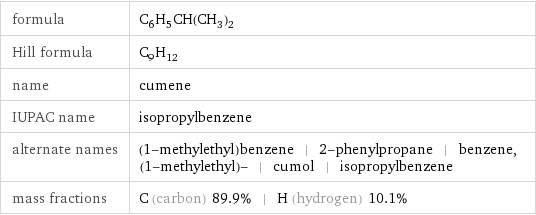
formula | C_6H_5CH(CH_3)_2 Hill formula | C_9H_12 name | cumene IUPAC name | isopropylbenzene alternate names | (1-methylethyl)benzene | 2-phenylpropane | benzene, (1-methylethyl)- | cumol | isopropylbenzene mass fractions | C (carbon) 89.9% | H (hydrogen) 10.1%
Lewis structure
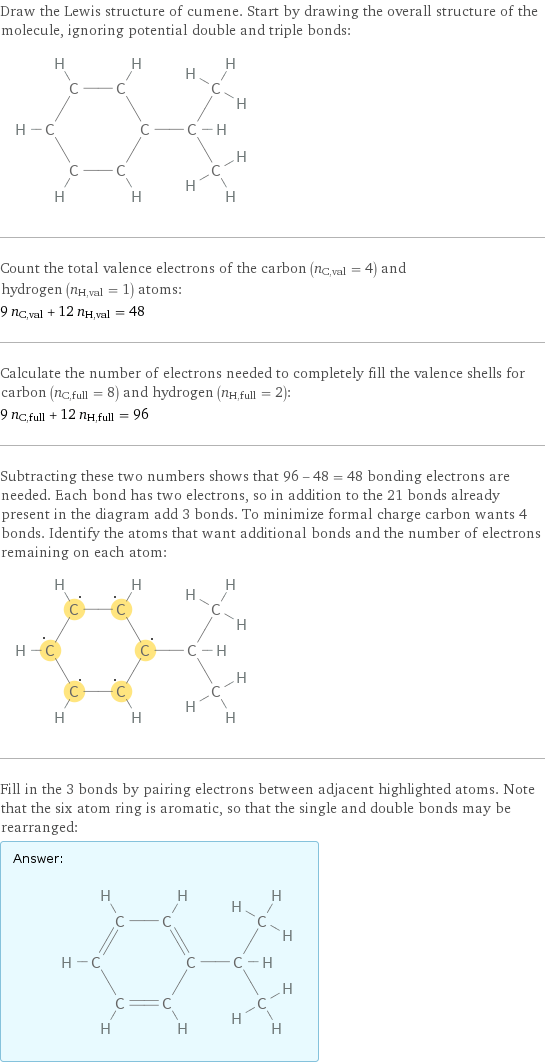
Draw the Lewis structure of cumene. Start by drawing the overall structure of the molecule, ignoring potential double and triple bonds: Count the total valence electrons of the carbon (n_C, val = 4) and hydrogen (n_H, val = 1) atoms: 9 n_C, val + 12 n_H, val = 48 Calculate the number of electrons needed to completely fill the valence shells for carbon (n_C, full = 8) and hydrogen (n_H, full = 2): 9 n_C, full + 12 n_H, full = 96 Subtracting these two numbers shows that 96 - 48 = 48 bonding electrons are needed. Each bond has two electrons, so in addition to the 21 bonds already present in the diagram add 3 bonds. To minimize formal charge carbon wants 4 bonds. Identify the atoms that want additional bonds and the number of electrons remaining on each atom: Fill in the 3 bonds by pairing electrons between adjacent highlighted atoms. Note that the six atom ring is aromatic, so that the single and double bonds may be rearranged: Answer: | |
3D structure
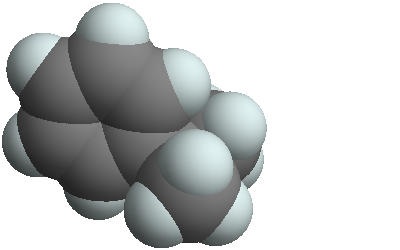
3D structure
Basic properties
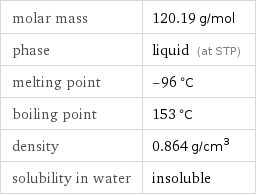
molar mass | 120.19 g/mol phase | liquid (at STP) melting point | -96 °C boiling point | 153 °C density | 0.864 g/cm^3 solubility in water | insoluble
Units

Liquid properties (at STP)
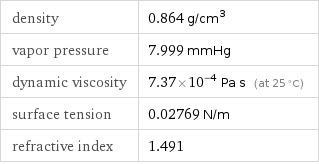
density | 0.864 g/cm^3 vapor pressure | 7.999 mmHg dynamic viscosity | 7.37×10^-4 Pa s (at 25 °C) surface tension | 0.02769 N/m refractive index | 1.491
Units

Thermodynamic properties
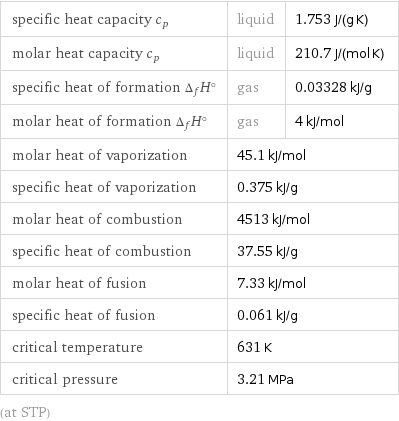
specific heat capacity c_p | liquid | 1.753 J/(g K) molar heat capacity c_p | liquid | 210.7 J/(mol K) specific heat of formation Δ_fH° | gas | 0.03328 kJ/g molar heat of formation Δ_fH° | gas | 4 kJ/mol molar heat of vaporization | 45.1 kJ/mol | specific heat of vaporization | 0.375 kJ/g | molar heat of combustion | 4513 kJ/mol | specific heat of combustion | 37.55 kJ/g | molar heat of fusion | 7.33 kJ/mol | specific heat of fusion | 0.061 kJ/g | critical temperature | 631 K | critical pressure | 3.21 MPa | (at STP)
Chemical identifiers
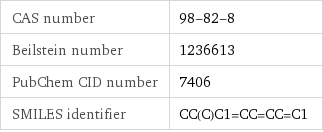
CAS number | 98-82-8 Beilstein number | 1236613 PubChem CID number | 7406 SMILES identifier | CC(C)C1=CC=CC=C1
NFPA label

NFPA label
Safety properties
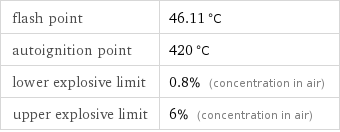
flash point | 46.11 °C autoignition point | 420 °C lower explosive limit | 0.8% (concentration in air) upper explosive limit | 6% (concentration in air)
Toxicity properties

lethal dosage | 1400 mg/kg (oral dose for rats) short-term exposure limit | 365 mg/m^3 threshold limit value | 50 ppmv
Units
